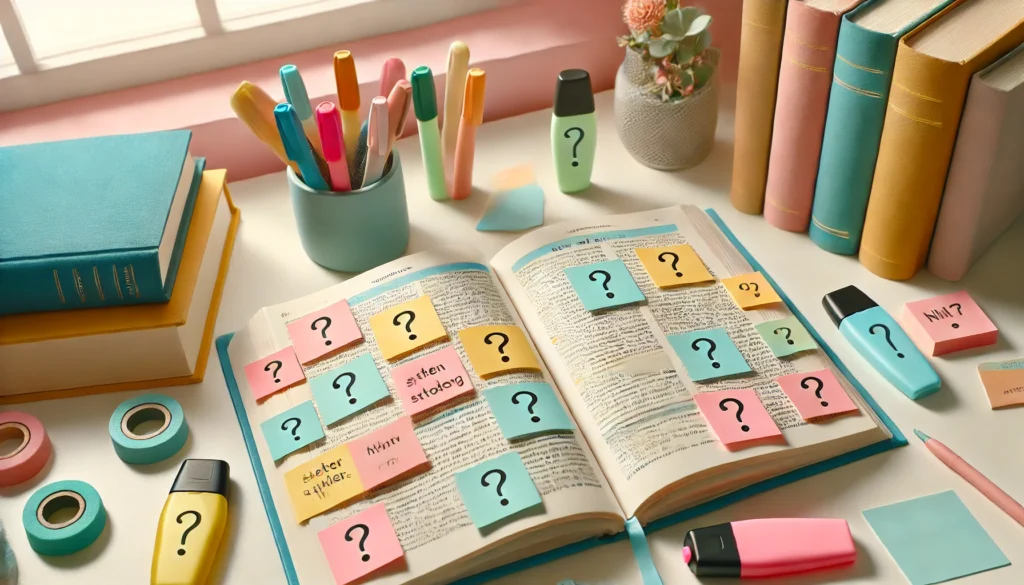Have you ever spent hours studying, only to find that you can’t remember much? What if I told you that studying more doesn’t always mean learning more?
This might sound strange, but it’s a idea that has changed how we think about learning. Today, we’re going to explore the science behind studying less and learning more. This article is inspired by the popular YouTube lecture “Study Less Study Smart” by Dr. Marty Lobdell. We’ll combine Dr. Lobdell’s ideas with current research to give you a fresh look at how to learn better while spending less time with your books.
Whether you’re a student preparing for tests, a professional trying to learn new skills, or just someone who loves learning, these strategies can help you remember information better. So, let’s dive in and discover how you can change your study habits and boost your learning!
The Magic of the 30-Minute Study Sprint
Imagine sitting down to study for three hours straight. By the end, you’re staring at the same page, wondering where the time went. This happens to many people, and there’s a scientific reason for it.
Research shows that we can only focus intensely on a task for about 25-30 minutes. This led to the “30-Minute Rule” for studying. The idea is simple: study hard for 30 minutes, then take a short break.
“It’s not about how long you study, it’s about how effectively you use your study time,” says Dr. John Dunlosky, a professor of psychology at Kent State University.
But why does this work? Our brains aren’t made for long periods of intense focus. By breaking your study time into smaller parts, you’re working with how your brain naturally pays attention.
Here’s how you can use the 30-Minute Rule:
- Set a timer for 30 minutes.
- Study with all your focus during this time.
- When the timer goes off, take a 5-minute break.
- Repeat this cycle.
During your break, do something totally different. Stand up, stretch, get a drink of water, or do a quick chore. The key is to give your brain a real break from studying.
This method works because it matches your brain’s natural rhythm of focus and rest. When you study in short, intense bursts, you’re more likely to remember what you’ve learned. Plus, knowing you have a break coming up can help you stay focused during your study time.
The 30-Minute Rule can also help you avoid burnout. Studying for hours without breaks can make you feel tired and frustrated. But with regular breaks, you’ll feel more refreshed and ready to learn.
Remember, the goal isn’t to study for less time overall. Instead, it’s about using your study time more effectively. You might find that you can learn more in a few focused 30-minute sessions than in several hours of unfocused study.

Transform Your Space, Transform Your Grades
Imagine trying to sleep at a loud party. It would be really hard, right? Well, trying to study in a distracting place is just as tough. Where you study plays a big role in how well you learn and remember information.
Having a special study space isn’t just about having a clean desk. It’s about creating a place that tells your brain it’s time to focus and learn. This is where the idea of a “study lamp” comes in.
Dr. Robert Bjork, a well-known psychologist who studies how people learn, explains:
“Environmental context can have a profound effect on learning and memory. When we associate a particular environment with studying, it becomes easier to enter a focused state of mind in that space.”
Here’s how you can create a good study environment:
- Choose one place to study: This could be a corner of your room, a specific table at the library, or even a particular chair in your living room.
- Use a “study lamp”: This doesn’t have to be fancy. The idea is to have a light that you only turn on when you’re studying. This becomes a signal for your brain that it’s time to focus.
- Reduce distractions: Make sure your study space is quiet and free from interruptions. You might need to use headphones or find a quiet spot.
- Keep it organized: A messy space can lead to a messy mind. Keep your study area tidy and have all the things you need within reach.
A good study environment can make a big difference. Researchers found that students who created a special study space saw their grades go up by half a letter grade on average.
Your study environment affects your learning in several ways. First, it helps you focus. When you’re in your study space, your brain knows it’s time to concentrate. This can help you avoid distractions and stay on task.
Second, a consistent study environment can help with memory. When you learn something in a particular place, being in that place later can help you remember it. This is why studying in the same place where you’ll take a test can be helpful.
Lastly, a good study environment can make studying feel easier and more enjoyable. When you have everything you need and feel comfortable, you’re more likely to want to study.
Remember, your study space doesn’t have to be perfect. The most important thing is that it works for you. Experiment with different setups until you find what helps you focus best.

Teach an Empty Chair, Fill Your Mind
Have you ever tried to explain something to someone, only to find that you understand it better after explaining it? This is the idea behind one of the best ways to learn: the “empty chair” method.
The idea is simple but powerful. After you study something, pretend you’re teaching it to an imaginary student (that’s the “empty chair”). This is a type of active learning, which research shows works much better than passive methods like just re-reading or highlighting.
Dr. Richard Feynman, a famous scientist known for explaining complex ideas simply, loved this method. He said:
“If you want to master something, teach it. The more you teach, the better you learn.”
Here’s how you can use the “empty chair” technique:
- Study a topic for about 30 minutes (remember our 30-minute rule!).
- Set up an empty chair in front of you.
- Pretend you’re teaching the topic to a student sitting in that chair.
- Explain the idea out loud, as if you’re giving a lesson.
- If you get stuck or realize there are things you don’t understand well, make a note and review those parts later.
This method works for several reasons. First, it makes you pull information from your memory, which strengthens the brain connections related to that knowledge. Second, it helps you find areas where you don’t understand something well, so you know what to study more.
When you explain something out loud, you have to organize the information in your mind. This process of organizing and expressing ideas helps you understand them better. It’s like creating a mental map of the information.
Teaching an imaginary student also forces you to simplify complex ideas. This is a great skill for learning because if you can explain something simply, it usually means you understand it well.
Another benefit of this method is that it can make studying more interesting. Instead of just reading or memorizing, you’re actively engaging with the material. This can help you stay focused and motivated.
You don’t have to limit yourself to an empty chair, either. You could explain concepts to a pet, a stuffed animal, or even record yourself explaining it. The key is to verbalize your understanding out loud.
Remember, the goal isn’t to give a perfect lecture. It’s okay if you make mistakes or realize you don’t understand something. These moments are valuable because they show you what you need to study more.
By teaching an empty chair, you’re not just reviewing information—you’re actively working with it, which leads to deeper understanding and better memory.

SQ3R: The Ultimate Textbook Hack
Textbooks can be scary. Pages and pages of dense information can make even the most dedicated student’s eyes glaze over. But what if there was a way to make reading textbooks not just bearable, but actually helpful? That’s where the SQ3R method comes in.
SQ3R stands for Survey, Question, Read, Recite, and Review. This method, created by education expert Francis Pleasant Robinson, turns passive reading into an active, engaging process.
Here’s how it works:
- Survey: Quickly look over the chapter. Check out headings, subheadings, and any summaries or questions at the end.
- Question: Turn each heading and subheading into a question. This gets your brain ready to look for specific information.
- Read: Now, read the section with the goal of answering your questions.
- Recite: After each section, say the main points out loud. If you can’t, go back and read it again.
- Review: Once you’ve finished the chapter, look at your questions and try to answer them without looking at the text.
Dr. John Dunlosky, who has studied many learning techniques, found that the SQ3R method really helps students understand and remember what they read. He says:
“The SQ3R method encourages students to engage with the text in a way that promotes understanding and recall, rather than just passive consumption of information.”
The SQ3R method works because it turns reading from a passive activity into an active one. When you survey the text and create questions, you’re setting goals for your reading. This makes your brain more alert and ready to find important information.
The “read” step is more effective because you’re not just reading aimlessly. You’re looking for answers to your questions, which helps you focus on the most important parts of the text.
Reciting what you’ve read helps move information from your short-term memory to your long-term memory. It also helps you identify any parts you don’t understand well.
The review step reinforces what you’ve learned and helps you see the big picture. It’s like putting together pieces of a puzzle – you can see how all the information fits together.
Using SQ3R might take more time at first, but it can save you time in the long run. You’ll understand and remember more from your first read-through, which means less time spent re-reading or cramming later.
This method can be used for any kind of reading, not just textbooks. You can use it for articles, reports, or even non-fiction books. The key is to engage actively with what you’re reading, rather than just passively taking in information.
By applying the SQ3R method, you’re not just reading—you’re having a conversation with the text, which significantly boosts your learning.

Memory Tricks: Mnemonics to the Rescue
We’ve all been there: looking at a list of facts or terms, trying hard to remember them. But what if there was a way to make this process not just easier, but also more fun? That’s where mnemonics come in.
Mnemonics are memory tricks that help you remember information by connecting it with something easier to recall. There are several types of mnemonics, but we’ll focus on three powerful ones: acronyms, coined sayings, and interacting images.
- Acronyms: Create a word using the first letter of each item you need to remember. For example, “ROY G. BIV” for the colors of the rainbow (Red, Orange, Yellow, Green, Blue, Indigo, Violet).
- Coined Sayings: Make a sentence where each word starts with the letter you need to remember. For instance, “Every Good Boy Does Fine” for the lines of the treble clef in music (E, G, B, D, F).
- Interacting Images: Create a vivid, often silly, mental picture that links the items you need to remember. The weirder the image, the more memorable it becomes.
Dr. Henry Roediger, an expert in human learning and memory, explains why mnemonics work:
“Mnemonics work because they encode information in a way that makes it more accessible to our brains. They create additional neural pathways to the information, making recall easier and more reliable.”
Let’s look at a practical example. Say you need to remember the first five U.S. presidents in order: Washington, Adams, Jefferson, Madison, Monroe. You could create an interacting image: Imagine George WASHINGton using an ADAMSs apple as a JEFFERSONian chair, while James MADISONna sings to MarilynMONROE.
Sounds silly? That’s the point! The more unusual the image, the more likely you are to remember it.
Mnemonics work for several reasons. First, they make abstract or unrelated information more concrete and connected. This helps your brain store and retrieve the information more easily.
Second, mnemonics often use humor or creativity, which can make the learning process more enjoyable. When you’re having fun, you’re more likely to remember things.
Third, mnemonics often use multiple senses or types of memory. For example, an acronym uses both visual memory (seeing the letters) and auditory memory (saying the word). This creates more pathways in your brain to the information.
Mnemonics can be especially helpful for remembering lists, sequences, or groups of related information. They’re commonly used in fields like medicine, law, and science, where there’s a lot of terminology to remember.
However, it’s important to note that mnemonics are most useful for remembering specific facts or lists. They’re not as helpful for understanding complex concepts or processes. For those, methods like the “empty chair” technique or SQ3R might be more effective.
Also, the best mnemonics are often the ones you create yourself. They’re personal and meaningful to you, which makes them even more memorable.
By using mnemonics, you’re not just memorizing—you’re creating unique, personal connections to the information, making it much more likely to stick in your long-term memory.

Sleep Your Way to Better Grades
It might sound too good to be true, but one of the most effective study techniques doesn’t involve studying at all. In fact, it involves doing absolutely nothing—while you sleep.
Sleep plays a crucial role in learning and memory consolidation. During sleep, particularly during the Rapid Eye Movement (REM) stage, your brain processes and consolidates the information you’ve learned during the day. It’s like your brain is filing away all the important information, making it easier to recall later.
Dr. Matthew Walker, a neuroscientist and sleep expert, emphasizes the importance of sleep in learning:
“Sleep is not just the absence of wakefulness. It is far more than that. It is an active process where the sleeping brain works hard to process, transform and file away all of the new memories that you have made during the day.”
Here’s how you can use sleep to help your learning:
- Prioritize sleep: Try to get 7-9 hours of sleep each night, especially when you’re learning a lot.
- Review material before bed: Quickly go over the most important points you’ve studied during the day right before you sleep.
- Avoid all-nighters: They might seem like a good idea, but they really hurt your ability to learn and remember information.
- Keep a regular sleep schedule: Try to go to bed and wake up at the same time every day, even on weekends.
- Create a relaxing bedtime routine: This could include reading a book, listening to calm music, or doing some gentle stretches.
The impact of good sleep on learning can be big. A study found that students who got 8 hours of sleep did better on memory tests compared to those who only slept for 6 hours.
Sleep helps learning in several ways. First, it helps move information from your short-term memory to your long-term memory. This process, called consolidation, is crucial for remembering what you’ve learned.
Second, sleep helps your brain make connections between different pieces of information. This can lead to new insights and a deeper understanding of what you’ve learned.
Third, sleep helps clear out toxins in your brain that build up during the day. This “brain cleaning” helps your mind work better when you’re awake.
Lastly, good sleep helps you feel more alert and focused during the day. This means you can pay attention better in class and study more effectively.
It’s important to note that the quality of sleep matters as much as the quantity. Having a consistent sleep schedule and creating a good sleep environment (dark, quiet, and cool) can help improve your sleep quality.
By making sleep a priority, you’re not just resting—you’re giving your brain the time it needs to process and store all the information you’ve worked so hard to learn.

Putting It All Together: Your Action Plan
We’ve covered a lot, from the 30-minute study rule to the importance of sleep. Now, let’s put it all together into a plan you can start using today:
- Use the 30-minute study rule: Use a timer on your phone to structure your study sessions. Start with just one or two 30-minute sessions a day and slowly do more.
- Create your ideal study environment: Pick a consistent study spot and get a special “study lamp”. Remove things that might distract you, like your phone or social media notifications.
- Practice the “empty chair” technique: After each study session, spend 5-10 minutes explaining what you’ve learned to an imaginary student. Make note of any parts you find difficult.
- Use the SQ3R method for your readings: Start with just one chapter or article. Survey it, create questions, read actively, say the main points out loud, and review at the end.
- Create mnemonics for tough content: Find a list of facts or terms you’re having trouble remembering. Try making an acronym, a funny sentence, or a weird mental image to help you recall them.
- Make sleep a priority: Set a regular sleep schedule aiming for 7-9 hours each night. Create a relaxing bedtime routine and stick to it, even on weekends.
Remember, you don’t need to use all of these strategies at once. Start with one or two that you think will work best for you. As they become habits, slowly add the others.
Learning is different for everyone, and what works best for you might be a mix of these strategies. Don’t be afraid to try different things and change these techniques to fit your needs and how you like to learn.
For example, if you find that 30 minutes is too long for focused study, try 20-minute sessions instead. If explaining to an empty chair feels weird, try teaching a pet or recording yourself explaining the concept.
The key is to find what works for you and to keep at it. Learning new study habits takes time, so be patient with yourself. You might not see results right away, but if you stick with it, you’ll likely notice that you’re learning more while spending less time studying.
Conclusion: Your Journey to Smarter Learning
As we wrap up, let’s remember why we started this journey. The goal isn’t just to study less—it’s to learn more effectively. By using these science-backed strategies, you’re not just saving time. You’re training your brain to learn better.
Think about how these techniques fit together. The 30-minute rule helps you focus intensely for short periods. Your study environment sets the stage for learning. The empty chair technique and SQ3R method make your study sessions active and engaging. Mnemonics give you tools to remember key information. And good sleep helps your brain process and store what you’ve learned.
As you start using these methods, pay attention to what works best for you. Everyone’s brain is different, so your perfect study strategy might be unique to you.
Remember the words of Albert Einstein:
“Never regard study as a duty, but as the enviable opportunity to learn.”
With these strategies, you’re not just studying—you’re unlocking your full learning potential. You’re turning study time into an opportunity for growth and discovery.
So go ahead, give these techniques a try. Be patient with yourself as you learn new habits. Celebrate your progress, no matter how small. And most importantly, enjoy the process of learning.
Your future self will thank you not just for the knowledge gained and the time saved, but for the valuable skill of learning how to learn. This is a skill that will serve you well throughout your life, in school, in your career, and in your personal growth.
Happy learning!
And if you want to learn more ways to min-max your study time, here are some other great strategies:
Leverage Spaced Repetition to Remember More by Studying Less
Here is the classic lecture from Professor Marty Lobdell
